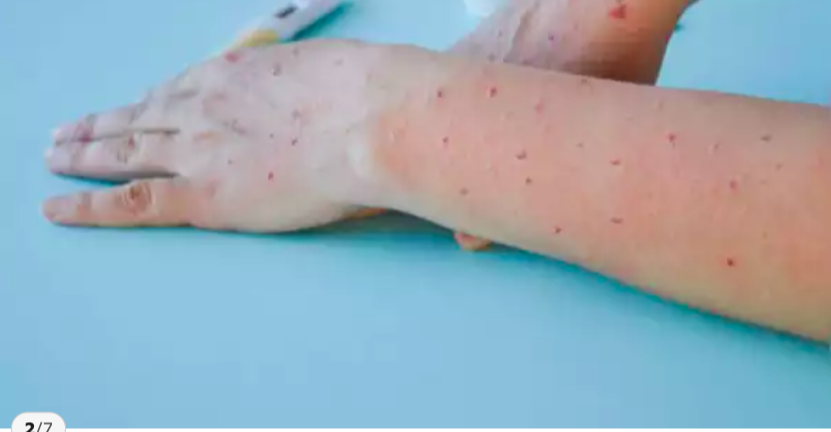Health
What Is the Treatment For Mouth Ulcer?

Last Updated on November 5, 2023 by Nurse Vicky
What Is the Treatment For Mouth Ulcers?
Mouth ulcers can be quite a nuisance, causing discomfort and pain that can disrupt your daily life. These small, painful sores can appear on the inside of your cheeks, lips, tongue, and even the roof of your mouth.
If you’ve ever had a mouth ulcer, you know just how frustrating it can be. But fear not, we’re here to guide you through what mouth ulcers are, why they occur, and most importantly, the various treatment options available.
Understanding Mouth Ulcers
Mouth ulcers, also known as canker sores or aphthous ulcers, are shallow, round or oval sores that form inside the mouth. They are usually white or yellow with a red border and can be quite painful. While they are not contagious, they can make eating, drinking, and even speaking uncomfortable.
Types of Mouth Ulcers
There are three primary types of mouth ulcers:
- Minor Ulcers: These are the most common and usually small, with a diameter of less than 1cm. They typically heal within 1-2 weeks.
- Major Ulcers: These are larger, deeper, and more painful than minor ulcers. They can take up to six weeks to heal and may leave a scar.
- Herpetiform Ulcers: These are clusters of multiple, tiny ulcers that can merge to form one large sore. They tend to be the most painful and can last from one week to several months.
Why Do Mouth Ulcers Occur?
Mouth ulcers can be triggered by various factors, such as:
- Stress: Emotional stress can weaken the immune system and lead to mouth ulcers.
- Food Sensitivities: Certain foods like citrus fruits, nuts, and spicy foods can irritate the mouth and trigger ulcers.
- Injury: Accidental biting, dental braces, or sharp edges of teeth can cause ulcers.
- Hormonal Changes: Women may experience mouth ulcers during their menstrual cycle.
- Underlying Health Conditions: In some cases, mouth ulcers can be a symptom of an underlying health issue.
Treatment Options for Mouth Ulcers
Now that we understand what mouth ulcers are and why they occur, let’s explore the treatment options available to provide you with much-needed relief.
1. Over-the-counter (OTC) Remedies
You can find a variety of OTC products like oral gels, creams, and mouthwash designed to alleviate the pain and discomfort of mouth ulcers.
2. Home Remedies
- Saltwater Rinse: Gargling with warm salt water can help reduce inflammation and promote healing.
- Honey: Applying honey directly to the ulcer can speed up the healing process.
3. Prescription Medications
In severe cases or when ulcers are caused by an underlying medical condition, your healthcare provider may prescribe medications such as corticosteroids or antimicrobial mouthwash.
4. Lifestyle Changes
Making a few lifestyle adjustments can also help prevent and manage mouth ulcers. Avoiding trigger foods and managing stress can go a long way in reducing the frequency of ulcers.
5. Oral Hygiene
Maintaining good oral hygiene is essential. Using a soft-bristle toothbrush and avoiding abrasive toothpaste can help prevent injury to the mouth.
FAQs
1. Can mouth ulcers be a sign of a more serious health condition?
While most mouth ulcers are harmless and resolve on their own, in some cases, recurrent or persistent ulcers may be a symptom of an underlying health issue. It’s advisable to consult a healthcare provider if you have concerns.
2. Are mouth ulcers contagious?
No, mouth ulcers are not contagious. You can’t spread them through close contact or by sharing utensils.
3. How long do mouth ulcers typically last?
The duration of mouth ulcers can vary. Minor ulcers usually heal within 1-2 weeks, while major and herpetiform ulcers may take longer to resolve.
4. Can I prevent mouth ulcers?
While you can’t always prevent mouth ulcers, you can reduce the risk by avoiding trigger foods, managing stress, and maintaining good oral hygiene.
5. Do I need to see a dentist for mouth ulcers?
You can initially manage mouth ulcers at home or with OTC products. However, if they persist or become more severe, it’s a good idea to consult a dentist or healthcare professional.
6. Is there a link between mouth ulcers and vitamin deficiencies?
Yes, vitamin deficiencies, especially of B vitamins, can contribute to the development of mouth ulcers. Ensuring a balanced diet can help prevent this.
7. Can children get mouth ulcers?
Yes, children can get mouth ulcers. They are not exclusive to adults and can affect individuals of all ages.
We hope this comprehensive guide has provided you with valuable insights into the treatment of mouth ulcers. Remember that everyone’s experience is unique, and what works for one person may not work for another. If you have persistent or severe ulcers, it’s always best to seek professional medical advice.
Conclusion
Mouth ulcers, though painful, are a common occurrence and can usually be managed effectively with the right treatment. If you’re experiencing persistent or severe ulcers, it’s essential to consult a healthcare professional for a proper diagnosis and treatment plan.
Health
6 Daily Habits to Naturally Lower Cholesterol Levels
Health
Understanding the Rapid Spread of Monkeypox’s New Strain Clade 1b

Understanding the Rapid Spread of Monkeypox’s New Strain Clade 1b: Key Facts on Transmission, Symptoms, Severity, and Vaccination
Monkeypox, a viral disease with symptoms resembling smallpox, has recently gained attention due to the emergence of a newstrain, Clade 1b.
This article delves into the essential details about this new variant, including how it spreads, its symptoms, its severity, and the current state of vaccinations.
Our goal is to provide a comprehensive and clear understanding of this evolving situation, enabling readers to stay informed and prepared.
Monkeypox, once a rare and somewhat obscure disease, has recently become a significant public health concern due to the emergence of new strains.
Among these, Clade 1b has been noted for its rapid spread and distinct characteristics.
As we navigate through the complexities of this variant, it is crucial to grasp the fundamentals of its transmission, symptoms, severity, and preventive measures, including vaccination.
Understanding Monkeypox Clade 1b
What is Monkeypox?
Monkeypox is a zoonotic virus belonging to the Orthopoxvirus genus, which also includes smallpox.
First identified in monkeys, it can infect humans through close contact with infected animals or individuals.
While it shares similarities with smallpox, monkeypox tends to be less severe and less transmissible.
Clade 1b Overview
Monkeypox has several clades (strains), with Clade 1b being the most recent and notable for its rapid spread.
This strain has shown increased transmissibility compared to previous clades, raising concerns among public health officials.
Transmission of Clade 1b
Modes of Transmission
Clade 1b spreads primarily through:
- Direct Contact: Contact with bodily fluids, skin lesions, or contaminated surfaces of an infected person.
- Respiratory Droplets: Prolonged face-to-face interaction can lead to transmission through respiratory droplets.
- Animal Contact: Infected animals, particularly rodents and primates, can transmit the virus to humans.
Environmental Factors
Transmission rates can also be influenced by environmental factors such as:
- Crowded Living Conditions: Higher transmission rates are observed in densely populated areas.
- Sanitation Practices: Poor hygiene and sanitation can facilitate the spread of the virus.
Symptoms of Monkeypox Clade 1b
Early Symptoms
The symptoms of Clade 1b may resemble those of other viral infections, making initial diagnosis challenging.
Early symptoms include:
- Fever: A sudden onset of high temperature.
- Headache: Severe headaches that can persist for days.
- Muscle Aches: Generalized muscle pain and discomfort.
- Fatigue: Extreme tiredness and weakness.
Rash and Skin Lesions
A defining feature of monkeypox is the rash, which typically progresses through several stages:
- Macules: Flat, discolored spots on the skin.
- Papules: Raised bumps.
- Vesicles: Fluid-filled blisters.
- Pustules: Pus-filled lesions that eventually crust over.
Severe Symptoms
In more severe cases, symptoms may include:
- Encephalitis: Inflammation of the brain, leading to neurological symptoms.
- Pneumonia: Infection of the lungs that can cause difficulty breathing.
- Secondary Infections: Bacterial infections that may complicate the healing process.
Severity of Clade 1b
General Outlook
Clade 1b has been associated with a higher transmission rate and more severe outcomes compared to other strains. However, the overall severity can vary widely among individuals.
Factors influencing severity include:
- Immune System Status: Individuals with weakened immune systems or pre-existing conditions may experience more severe symptoms.
- Age: Young children and elderly individuals are at higher risk of severe illness.
- Timeliness of Medical Care: Early medical intervention can significantly affect the outcome.
Mortality Rates
The mortality rate for Clade 1b is currently under study, but initial data suggest it may be higher than previous strains. Prompt medical attention and supportive care are crucial in reducing the risk of severe outcomes.
Vaccination and Prevention
Current Vaccines
Vaccination is a key strategy in controlling the spread of monkeypox.
The following vaccines are relevant:
- Smallpox Vaccine: The smallpox vaccine is effective against monkeypox due to the similarities between the viruses. It provides protection for those who have been recently vaccinated or who received it in the past.
- Monkeypox-Specific Vaccine: Research is ongoing into vaccines specifically targeting monkeypox, with several candidates showing promise in trials.
Vaccination Recommendations
Public health authorities recommend vaccination for:
- Healthcare Workers: Individuals who are at higher risk due to their profession.
- High-Risk Populations: People in areas experiencing outbreaks or those with frequent exposure to infected individuals.
Preventive Measures
In addition to vaccination, preventive measures include:
- Good Hygiene: Regular handwashing and use of hand sanitizers.
- Avoiding Contact: Minimizing close contact with individuals displaying symptoms or with infected animals.
- Isolation: Infected individuals should isolate themselves to prevent the spread of the virus.
Conclusion
The emergence of Monkeypox Clade 1b represents a significant challenge to global health. Its increased transmissibility and potential for severe outcomes highlight the importance of staying informed and proactive.
By understanding its transmission, symptoms, and preventive measures, individuals and communities can better protect themselves and mitigate the impact of this new strain.
FAQs
1. What makes Clade 1b different from other monkeypox strains?
Clade 1b is noted for its increased transmissibility and potentially more severe outcomes compared to other strains.
It spreads faster and may lead to more serious health issues, necessitating closer monitoring and enhanced preventive measures.
2. How can I tell if I have monkeypox or another viral infection?
Monkeypox often begins with flu-like symptoms and progresses to a distinct rash.
If you experience these symptoms, especially if you’ve been in contact with someone who has monkeypox or are in an outbreak area, seek medical advice for accurate diagnosis and testing.
3. Is the smallpox vaccine effective against Monkeypox Clade 1b?
Yes, the smallpox vaccine offers protection against monkeypox, including Clade 1b, due to the similarities between the two viruses.
However, its effectiveness may vary based on factors such as time since vaccination and individual health conditions.
4. Are there any new vaccines specifically for monkeypox?
Research is ongoing to develop and approve vaccines specifically targeting monkeypox.
Several candidates are in various stages of clinical trials, with some showing promising results in enhancing protection against monkeypox strains, including Clade 1b.
5. What should I do if I suspect I have monkeypox?
If you suspect you have monkeypox, contact a healthcare provider immediately. They can guide you through testing, diagnosis, and appropriate care.
In the meantime, practice good hygiene and avoid close contact with others to prevent spreading the virus.
References:
Health
Understanding the Low Risk of Mpox Outbreak in India and Our Preparedness Measures

-

 Trending Stories1 year ago
Trending Stories1 year agoCDC: 1 in 4 Americans Still COVID-Free by End of 2022
-

 Health5 years ago
Health5 years agoMeghan Trainor Shares Motivational New Song ‘Blink’
-

 Health2 years ago
Health2 years agoHow Long Does Monkey Pox Last Before It Surfaces in the Body?
-

 Health2 years ago
Health2 years agoWhat Causes Swollen Body? Understanding Edema and its Triggers
-

 Health4 months ago
Health4 months agoHow Do Pawpaw Seeds Support Cardiovascular Health?
-

 Health3 years ago
Health3 years agoNutrition and the Importance of a Fitness Program – 3 Things to Know
-

 Health3 years ago
Health3 years ago5 Weird Reasons Why Pimples Disappear After Marriage
-

 Health2 years ago
Health2 years agoHealth Benefits Of Pawpaw Seed? 7 Things To Know






